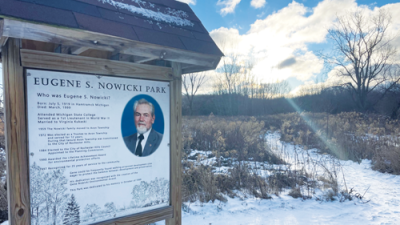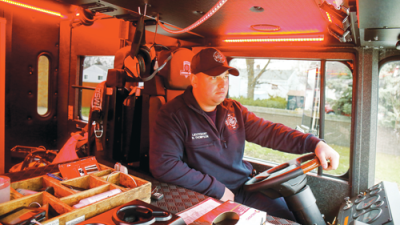WARREN — If you are a Warren resident living in a single family home, chances are your home was built prior to 1978. You may be exposed to lead-based paint, which can have dire effects on the brain development in small children and the babies of pregnant women exposed to it.
The year 1978 is pivotal because lead paint was legal to use in construction prior to this time. Afterward, it was illegal to use, but many properties had it in their homes.
“According to the City Assessor’s Office, 96% of Warren’s single family residences were built prior to 1978,” said outreach and intake technician of the Lead Hazard Control Program Timothy Jordan “TJ” Babinski. “This is what makes Warren a good candidate for this grant.”
The city of Warren has the Lead Hazard Control Program, which is a federal grant from the United States Department of Housing and Urban Development. This is awarded to qualifying low-income homeowners who are pregnant or have at least one child age 5 or younger living with them or spending a significant amount of time in the home, whose property has a lead hazard.
“A significant amount of time is no less than six hours a week, or no less than two visits per week, or no less than 60 hours a year,” said Babinski.
“This is a great program,” said James Fouts, mayor of Warren. “But the resident has to initial it and apply.”
The application process includes verification of income through check stubs or W-2s. The highest income eligible is 80% of the median income for Warren and Detroit. These are figures used by HUD, said Babinski.
According to the HUD chart, a family of one pregnant woman or one with a child 5 or younger who visits significantly can make no more than $50,150 a year and a family of four cannot have a combined income exceeding $71,600 a year.
Applications from families with children who have elevated levels of lead on a blood test will take priority.
“Ideally, normal blood levels would be zero, but more realistically it would be less than one microgram per deciliter. Elevated blood lead levels nowaday is considered 3.5 micrograms per deciliter. So, if we see anything over that number we push that application up to the front,” said Babinski.
In addition to verifying income and blood test results, the home must be built prior to 1978, owned by the resident and insured before any work is done on the home. Also, the owner and all the residents must be in the United States legally, according to Babinski.
According to Babinski, if any hazards are found in the home, licensed contractors will make the home safe.
“The work is dependent upon the professional lead inspection that we order. Usually, the most frequent hazards we see are doors and windows. Those areas are a lot of friction. If there are painted surfaces around windows or doors that have deteriorated, that could be a lead hazard,” said Babinski. “Once the paint has deteriorated, it could get into the air as dust, travel throughout the house, get on kids toys, and furniture. Obviously kids are famous for putting their hands in their mouth or other household items.”
The contractors have redone porches, windows, doors, garages. “There is really no limit that I’ve seen of the work that can be done,” said Babinski.
Recently, a front porch was found to be a lead-based hazard. Contractors tore off the porch and built a new one.
“Our goal is to ensure as many of Warren homes are lead-hazard safe for our youngest residents,” said Babinski.
To apply for the program fill out the form at cityofwarren.org/lead-hazard-control-program-form/
 Publication select ▼
Publication select ▼
















